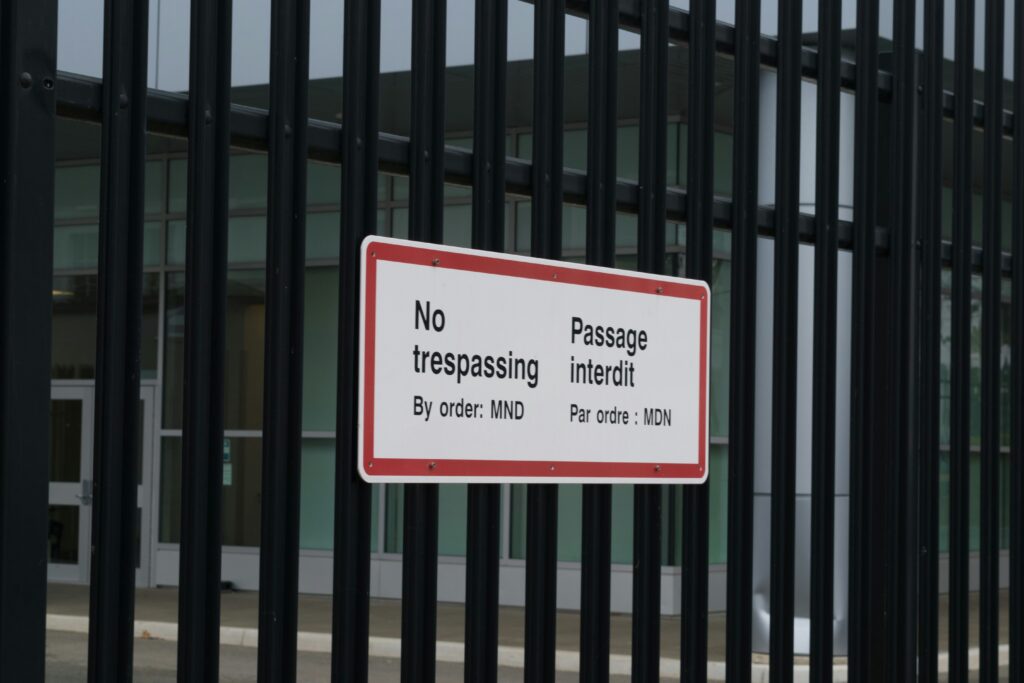Published on: 23rd June 2025
Authored By: Mahi Srivastava
VIPS-TC
Picture that you are living with your loving family and everything is perfect until a time comes that every time you move, your skin screams in pain, everything that you loved doing has lost its appeal. Would you take death in your own hands, or will you live until the very end? This dilemma generally comes out of a science fiction novel, but euthanasia is a legitimate deliberation for terminally ill patients who have suffered enough in their lives. The question here arises that what is Euthanasia and what are the legal implications and provisions in India for the same.
Euthanasia originates from the Greek words “Eu” (good) and “Thanatos” (death), meaning “good death.” It was practiced in ancient Greek society and was conceived as a good death. Its perspective changed over a period of time, during the renaissance period where the human body was subjected to scientific experiments, euthanasia was considered as a practice not a grave sin. Michael Stolberg mentions Apologie, the autobiography of a French surgeon named Ambroise Paré who happened upon three gravely wounded soldiers. An uninjured soldier asked the surgeon if they would live, to which he responded they would not. The uninjured soldier proceeded to slit their throats. In 19th century, surgeons started using chloroforms which would knock people out so the ability to relieve pain experienced as the result of surgical procedures, childbirth, or mere living, logically led to conversations about death and dying. The revolution surrounding this practice started when there was increased advocacy for human rights along with technological developments that led to the movement of Euthanasia which shows us the multifaceted nature of this word, from “good death”, “assisted dying” to “death with dignity”.
Euthanasia often termed as “mercy killing” means deliberately ending the life of a person who is suffering from an incurable condition[1], this step is generally taken to relieve the person from the unbearable pain they feel. However as easy as this term sounds it is an entanglement of ethical, medical, legal and religious considerations.
The debates aroused around the types of euthanasia, generally 2 types are considered Active and Passive. Active involves taking specific steps to cause a person’s death, such as administering a lethal dose of medication whereas passive involves withdrawing life-sustaining treatment which causes the person to die naturally[2]. But how do we decide which form of Euthanasia is better for our society? The moral justification between passive over active euthanasia is not convincing. Whether depriving a patient of food or antibiotics i.e withdrawing the life support system is merciless than administering a painless dose of death, it is highly debatable. It hinges on a questionable dichotomy: killing is not the same as allowing to die. The ‘life’ element and the ‘best interests of the patient’ element should be considered.
Indian courts have evolved the concept of Euthanasia in various cases. Earlier, the doctors who caused euthanasia came under the purview of exception 5 of Section 300 of the Indian Penal Code[3] since they had the requisite “intention” of causing death of a concerned patient. In cases of voluntary euthanasia, the said doctor would be liable for culpable homicide not amounting to murder under section 304[4] of IPC. The cases of involuntary euthanasia were covered under first provision of Section 92 of IPC[5]. In the case of Gian Kaur v State of Punjab[6] it was laid down that the right to life under Article 21[7] also includes the right to die but the Supreme Court rejected this contention. The first case of Euthanasia in India which was recognised was Aruna Ramchandra Shanbaug v Union of India[8], where the person was brutally raped and was unable to recover from the attack, she was relegated as helpless patient for the rest of her life. Forty years passed since the incident and she lived merely on the support of machines, it was prayed from her parent side to let her die in peace.
The next big question to come into the picture is who would consent for Ms. Shanbaug. Here clash between morality and the right of life can be evidently seen. The court held that an incompetent person who is unable to take decision whether to withdraw life support or not can take the views of near relatives and doctor. Consequently, the Apex Court held that though Active Euthanasia is completely illegal, Passive Euthanasia can be allowed to certain extent. Then, Common Cause v Union of India[9] came into view where the petitioners highlighted article 21 which includes the Right to live with Dignity as well as right to privacy. They contended that a person’s right to dignity lasts till the end of their natural life. The court passed the judgement legalising Passive Euthanasia and stated that a person’s natural death process has already started when they are in a permanent vegetative state or are terminally ill, and without life support, death is unavoidable. Consequently, it was stated that the right to privacy mandated preserving the decisions made by the individual for their private matter which include death also and that the safeguarding of these fundamental rights was guaranteed under Article 21. It upheld constitutional morality but also endorsed social morality.
However, the inclusion of the right to die within the right of life has been a point of contention with two legal impediments in its way in the form of Section 306[10] and 309[11] of IPC,1860[12] which criminalize abetment and attempt to suicide.
In the landmark case of P. Rathinam v. Union of India[13], the Supreme Court ruled that Section 309 IPC was unconstitutional as it violated Article 21. The Court emphasized that the right to life includes the right to not live forcefully. Individuals should have the freedom to make decisions about their own lives within legal boundaries. The section was deemed irrational and cruel, and its removal was considered necessary. The Court also clarified that suicide is not against public policy or religion, and thus should not warrant state intervention, as doing so would infringe on personal liberty.
What are the guidelines adopted by the Supreme Court for Euthanasia ?
To support the right to die with dignity, the Supreme Court established guidelines in 2018 for creating living wills, later simplified in 2023. A Living Will was created which is a legal document allowing individuals aged 18+ to specify their medical care preferences in case they lose decision-making ability. It must name at least two surrogate decision-makers and be signed before an executor, two witnesses, and attested by a notary or gazetted officer. The Supreme Court of India laid down guidelines in 2018 (simplified in 2023) for withholding or withdrawing life-sustaining treatment[14]:
a)Primary Medical Board with composition of a treating doctor and 2 experts assesses the
patient’s condition.
b)Secondary Medical Board with composition of different experts and a Chief Medical Officer
reviews the decision.
c) Consent is a major requirement from nominated or surrogate decision-makers.
d) Judicial Notification must be sent to the local magistrate.
This process ensures a “shared decision making” involving the medical team and patient’s family, it protects doctors legally, respects patient’s autonomy and maintains ethical standards.
Euthanasia proponents argue that ill people deserve the right to get free from their sufferings, they believe that the right to death is as equal as the right to marriage, freedom of speech etc. the sufferings are not only for the patient but also for the guardians of the patient, the caregiver’s burden is huge and cuts across various financial, emotional, time, physical, mental, and social domains. Alleviating the pains from both the patient and family leads to greater amount of happiness.[15] On the other hand, the people that opposes euthanasia argues that it is a form of suicide which is criminalised, it is an unsafe message to the importance of life and giving up. Religious institutions like churches also view it as a form of murder which ruins the purity of life. Religiosity itself plays a crucial part in shaping a doctor’s views. Views vary by sect. [16]Catholics strictly oppose euthanasia, calling it a sin against God and life, primarily upheld by the Roman Catholic Church, in Hinduism has 2 perspectives, first it says ending a painful life is a good deed and other says that it goes against the cycle of life and death (karma) as stated in the Vedas, and affects karmic balance. Islam prohibits this practice while Jainism supports Sallekhana (voluntary death through fasting) for those who renounce worldly passions. Euthanasia can be a reason to motivate those patients who are not even dependent on life supporting equipment. It can place the society on a slippery slope which can lead to unacceptable consequences. Also, the hope of getting cured either miraculously or through discovery of a possible cure will vanish.
It is clear that both the claims give patients certain rights but it can be said that the right to death and life are 2 sides of one coin. Although no one advocates for murder, none of us exactly knows what is suitable for the patient suffering from a terminally ill disease. Kenneth L. Vaux once said that “Having barred the door to Death, are we not then obliged at some point to open it?” Some countries in the world already recognized and legalized the provision of euthanasia, the courts in India have, accordingly, taken a long time in legalising euthanasia. Thus the word euthanasia may look like a small term but it evokes strong emotions and differing opinions. As medical technology advances the debate is likely to continue, ultimately the challenges lie to find balance between individual personal rights and protecting the suffering population, while ensuring that that compassionate care is available to all.
References:
[1] Prof. S. N. Misra, Indian Penal Code 535 (Central Law Publications, Allahabad, 21st edn., 2018)
[2] http://www.bbc.co.uk/ethics/euthanasia/overview/activepassive_1.shtml, assessed on 1st April, 2025 at 3:10 PM (IST)
[3] Penal Code, 1860, s. 300
[4] Penal Code, 1860, s. 304
[5] Penal Code, 1860, s.92
[6] (1996) 2 SCC 648
[7] Constitution of India, art. 21
[8] (2011) 4 SCC 454
[9] Common Cause v. Union of India, [1993] A.C. 789
[10] Penal Code, 1860, s. 306
[11] The Law Commission, in its 210th report submitted in 2008, had noted that attempt to suicide may be regarded more as a manifestation of a diseased condition of mind, deserving treatment and care rather than punishment, and accordingly recommended to the government to initiate the process for repeal of the “anachronistic” Section 309. It called Section 309 a “stumbling block in prevention of suicides and improving the access of medical care to those who have attempted suicide.”
[12] Penal Code, 1860, s. 309
[13] (1994) 3 SCC 394
[14] Supreme Court simplifies procedure to withhold life support of a terminally ill patient available at Supreme Court simplifies procedure to withhold life support of a terminally ill patient; Modifies guidelines given in 2018 Euthanasia Judgment | SCC Times (last visited April 4, 2025)
[15] Anuj Shaha, Legalizing Euthanasia – Issues and Challenges, Savttribaj Phule Pune University available at http://www.academia.edu/9440185/Legalizing_Euthanasia-Issues_and_Challenges (last visited April 4, 2025).
[16] An interesting overview of the manner in which some religions address the question of suicide and euthanasia can be found at http://www.religionfacts.coni/search.htm?cx=partner-pub-8652540295258724%3A2xolkp-sukm&cof=FOiaD%3A10&ie=ISO-8859-l&q=eumanasia+and+suicide+&sa=Google+Site+Search (last visited April 4, 2025).




